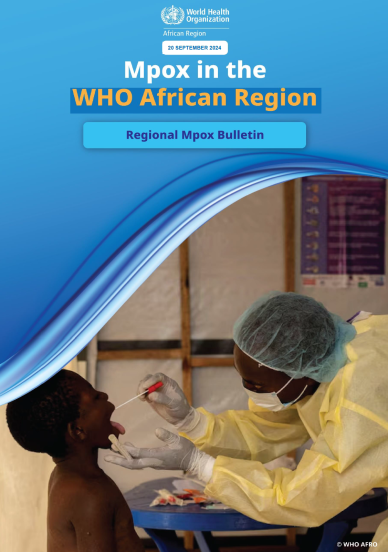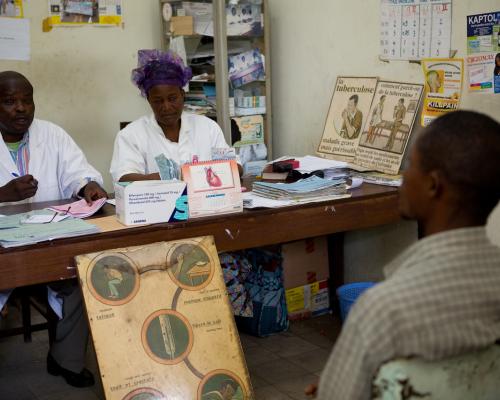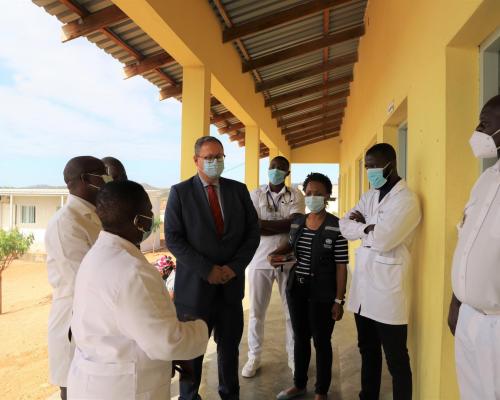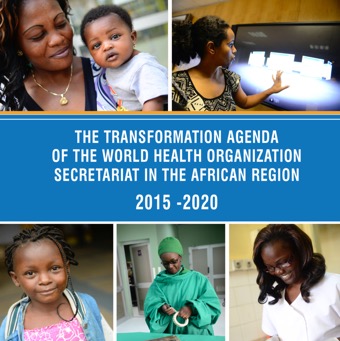
Regional Mpox Bulletin: 20 September 2024
Since 1 January 2022, cases of mpox have been reported to WHO from 17 Member States in the WHO African region. Since 1 January 2024, as of 20 September 2024, 14 countries have reported 6 521 confirmed cases, including 32 deaths. The three countries with the majority of the cases in 2024 are Democratic Republic of the Congo (n = 5 621), Burundi (n = 639), and Nigeria (n = 55).
A significant number of suspected mpox cases, that are clinically compatible with mpox remain untested due to limited diagnostic capacity in some African countries and thus never get confirmed. For this reason, we include suspected cases in this section of the report. In 2024, 14 countries have reported both 32 375 suspected and laboratory tested cases, including 844 suspected and confirmed deaths. This indicator should be interpreted with caution, as suspected mpox cases are recorded according to varying national case definitions. In some countries, suspected cases that undergo testing are not removed from the count, regardless of whether the test result is positive (confirmed case) or negative (discarded case). Moreover, not all countries have robust surveillance systems for mpox, meaning reported case counts are likely to underestimate the extent of community transmission.
Burundi declared the mpox epidemic driven by clade Ib of the virus on 25 July 2024. The situation escalated rapidly in the following weeks and, as of 15 September 2024 (epi week [EW] 37), a total of 564 laboratory confirmed cases with no deaths have been reported in 29 out of the 49 districts. A significant increase in cases was observed in EW 37, where 179 cases were reported, marking a 214% rise compared to the previous week. Notably, EW 37 alone accounts for 31.7% of all reported cases since the outbreak began 8 weeks ago. Northern Bujumbura remains the most affected area, accounting for 43.6% of the total cases. A high positivity rate of 38.5% further underscores significant community transmission, with no deaths reported so far. While 47.7% of the cases have recovered, effective case management is still evident. However, with 295 active hospitalized cases, the continuous strain on Burundi’s healthcare system and resources remains a critical concern as the outbreak continues to evolve.
Gabon reported its first confirmed case of mpox on 22 August in Libreville. The case involves a 30-year-old male who had recently travelled to Uganda, where he likely contracted the virus. Upon returning to Gabon, he developed symptoms, including fever, fatigue, and a generalized skin rash, and sought medical attention on 21 August. As of 15 September 2024, out of 15 suspected cases identified and tested, two tested positive for Mpox (the first case and a known contact of the first case).
The Central African Republic: As of EW 38, the Central African Republic (CAR) has reported 12 new suspected mpox cases, two newly confirmed cases in the Gamboula and Kembé-Satéma health districts, and zero new deaths. Seven patients remain hospitalized in various locations, including Mbaïki, Kémbé, Ouango, Batangafo, and Gamboula. Since the start of 2024, CAR has recorded 319 suspected cases, of which 54 have been confirmed, with one death. Notably, 25% of confirmed cases are children under four years old, and 75% are individuals under 25 years old. Mpox is actively spreading in seven health districts, while 14 districts have reported at least one confirmed case in 2024. The strain circulating in the country is Clade Ia.
Cameroon: As of 10 September 2024, the country has reported a total of 47 suspected mpox cases, of which 6 have been confirmed including two related deaths, spread across 7 regions. No new case or death have been reported in the past week, following the case reported in week 35 which occurred several months after the last case and the situation was under control. The positivity rate stands at 17.1%, with Clade II identified in multiple regions. Laboratory capacity for Mpox testing remains limited, and there are challenges in community engagement and risk communication.


